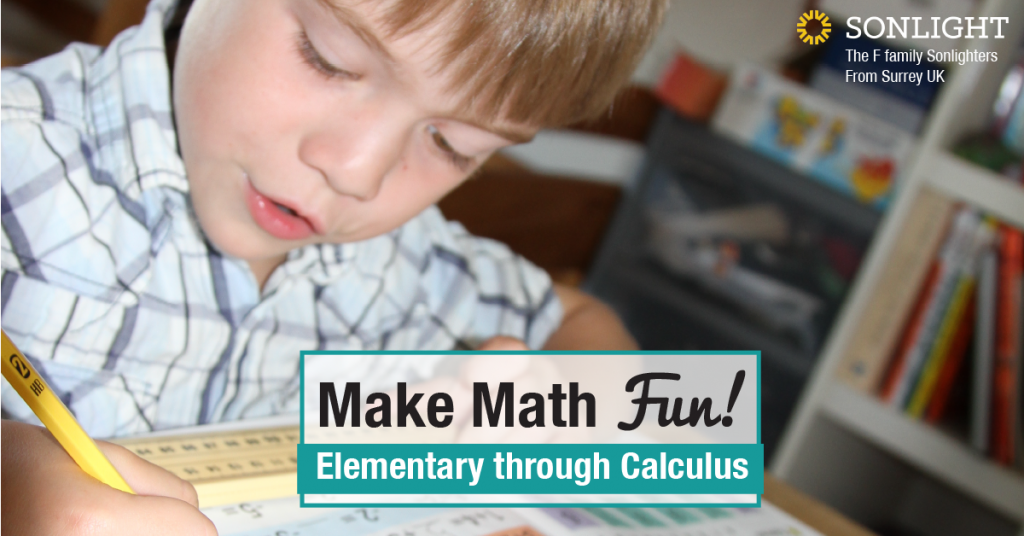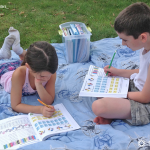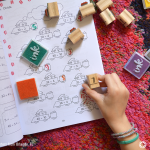Math U See is my favorite math program of all time, as it is easy to use, learn from, teach, and grade. I love watching my children quickly do their math and then move on to the next subject. However, every once in a while, we run into an area that needs a bit more practice to help it solidify. Since I have multiple children with dyslexia, some topics, which come naturally to some children, take more effort to teach. One of the first areas we got snagged on when we first started Math U See was memorizing the block colors and numbers by name without counting. Here are our tricks for memorizing Math U See blocks:

The Concept of Subitizing
In his videos, Mr. Demme teaches children how to look at a group of three objects or three spaces on one of the Math U See blocks and recognize it without having to count to three. The fancy name for this skill is subitizing. Many dyslexic children can struggle with it at times, especially with numbers higher than five.
However, subitizing is a key skill necessary for being able to add and multiply quickly. Children who remember that five plus six equals eleven will be able to complete their math assignment more quickly and accurately than those who have to count each time.
The Math U See Approach to Subitizing
Math U See uses color-coded blocks to help children remember what each number looks like. This helps them easily find and complete problems without having to stop and subitize each time. Children who lack this visual recognition of numbers can learn to recognize the blocks by color. This moves them a step towards greater fluency with math facts. If your children are struggling with rapid identification of the values of the blocks, here are a few techniques.
1. Use Nicknames for the Color Blocks
Mr. Demme does this to some degree in his videos. You will notice he often calls the eight block, “Chocol-eight,” as it resembles a chocolate bar. He does have a few other names for some of the numbers scattered throughout the videos to help children remember, but we came up with our own names and they seemed to work very well. Feel free to change these up or come up with your own by having your children name them, as the names they choose will have more meaning for them. If you get stuck or need ideas, you can borrow some of ours.
- One (green)—Little Green Man, Little Army Man, or Little Green Soldier
- Two (orange)—Two Duck Feet
- Three (pink)—Three Little Pigs
- Four (yellow)—Four Rays of Sunshine
- Five (light blue)—Half Blue, Half Tall, or Half Ten, depending upon the lesson we were working on and it’s objective. (As you will see below, the Ten block is a darker blue, is twice as tall, and has twice the value)
- Six (lavender)—Six Purple Popsicle Licks (Licks rhymes with six, and the color matches a tongue after eating a grape popsicle.)
- Seven (light off-white or very light tan)—Seven-illa. (a play on the word vanilla and the color of vanilla ice cream)
- Eight (brown)—Chocol-eight
- Nine (light teal or very light green)—Mint Nine-Scream. (after ice cream)
- Ten (bright blue)—Too-Tall Ten (A ten is too tall to fit into the units house; he must be moved over to the tens house when adding or multiplying. So we switched his name from Tall Ten to Too-Tall Ten.)
- Hundred (red)—the Big Red Train (big enough to haul everyone else around)
2. Make It a Game
Instead of having your children tell you their answer in numbers, see if they can tell you any answer from 1-10 in colors instead, without looking. Keep it light and fun! Let them know you’re trying to trip them up, so you don’t expect them to get them all right. When they do, act extra surprised and impressed.
3. Use Flash Cards
Take an index card and put a numeral from 1-10 on one side, and draw any shape or object of that color on the other side (you can even do just scribbles). Use the cards to help them quickly recall matching numbers and colors.
4. Make Up Stories
What if Too-Tall Ten wanted to blow down the house of the Three Little Pigs? Mint Nine-Scream wants to be a Ten. Who does she need to join up with to achieve her goals? Letting your children interact with the blocks using both their names and colors can help them to memorize them more effortlessly.
Most children should be able to pick up at least a general idea of the color and numeration of Math U See blocks within a few days or weeks, barring issues that prevent them from identifying color (color blindness, poor vision, etc.). These color names will stick with them for years to come, helping them to visualize the blocks (and the answers!) I’ve had a high schooler laughingly tell me he used the blocks in his head when doing standardized testing. The ability to recall math facts is always beneficial and memorizing the Math U See blocks by color name will help in future assignments.
Intrigued? Check out Math U See products here or have your child take a placement test here.








